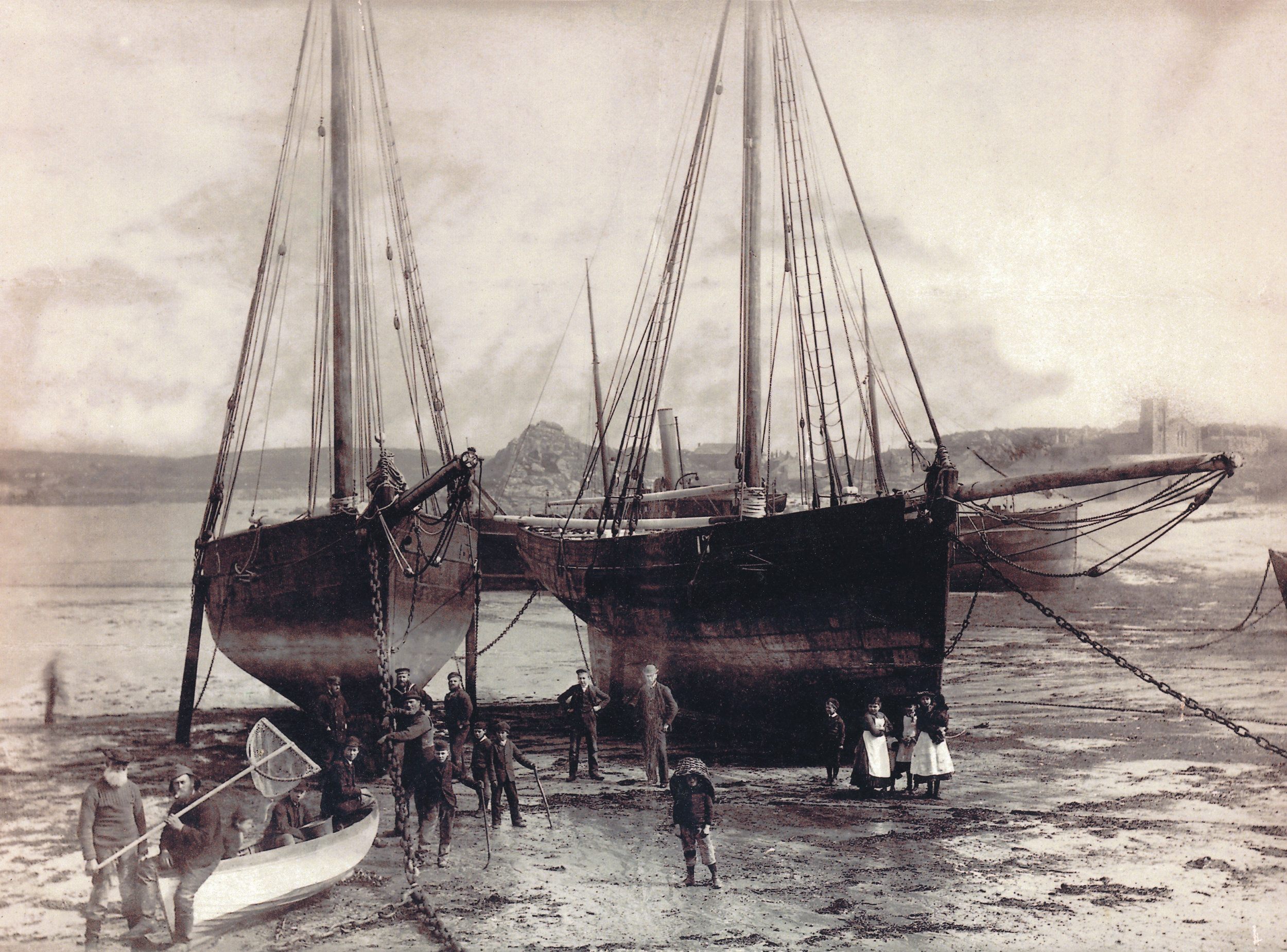The age of Scillonian photography dawned when John Gibson (1827-1920) acquired his first camera. He had come to Scilly aged 12 on the death of his father, a St Martin’s man. His widowed mother ran a shop and John went to sea, a typical way for boys from Scilly to help bolster the family finances. His camera, an exotic luxury in Victorian times, became his passport to financial security. By his mid-thirties John Gibson owned a photography studio in Penzance.
In the mid-1860s the family returned to the islands. John and his sons, Alexander Gendall Gibson (1857-1944) and Herbert John Gibson (1861-1937), founded the Lyonnesse photography studio at their home on St Mary’s. An advertisement invited visitors to see the Gibsons’ private museum of local discoveries at the Church Street house.
Astoundingly, the islands were not just the photographic domain of the Gibsons. Two very talented contemporaries of Alexander and Herbert Gibson were active in Scilly over several decades.
Charles J. King (c.1858-1939), a native of Southend-on-Sea, came to Scilly to open a chemist’s shop, the first St. Mary’s Pharmacy, in 1890. He became interested in photography and made the first picture postcards sold in the islands. His early photographic studies were exhibited all over England and the continent.
‘Fudgy’ King was a keen all-round sportsman, which stood him in good stead as he became increasingly passionate about wildlife photography. He stalked and photographed wild seabirds and seals, climbing the most perilous of slopes and rocks to get shots from every conceivable angle, building temporary hides and setting trip-wires – anything to get the best possible picture.
In old age he returned to live in Essex but lectured all over the country on the bird life of Scilly. Only two weeks before his death, he spoke to the inmates of Pentonville Prison on this subject.
Francis J. Mortimer (1874-1944) was brought up in Portsmouth but was related to a St Agnes family. He became an internationally acclaimed photographer. With his home-made waterproof camera, F.J. would clamber over rocky headlands and set sail during rough seas to photograph wild storms and vessels in distress, greatly admiring the lifeboat crews who navigated Scilly’s treacherous waters and deeply conscious of his Scillonian roots.
At a time when studio portraits were in vogue and lucrative, the Gibsons, King and Mortimer pioneered the use of unwieldy and heavy equipment in often challenging conditions to record special events and daily life. Common to all photographers were the difficulties of working to professional standards: juggling remote locations, heavy equipment, mobile dark rooms, and above all unpredictable weather and intractable tides. Ingenuity, courage and stubbornness were prerequisites for photographers working in these islands.
These photographers stimulated a huge interest in Scilly in photography. Islanders posed for their photo portraits and a few acquired their own cameras. The Isles of Scilly Museum has gained LAG funding to embark on a major project to scan and record the islands’ photographs. Please show us your photos and albums from late August onwards. If you are willing to let us scan your images, then we can supply you with a digital copy. This is an ideal way to conserve your photographs for the future and will help the Museum safeguard the photographic legacy of the islands.











